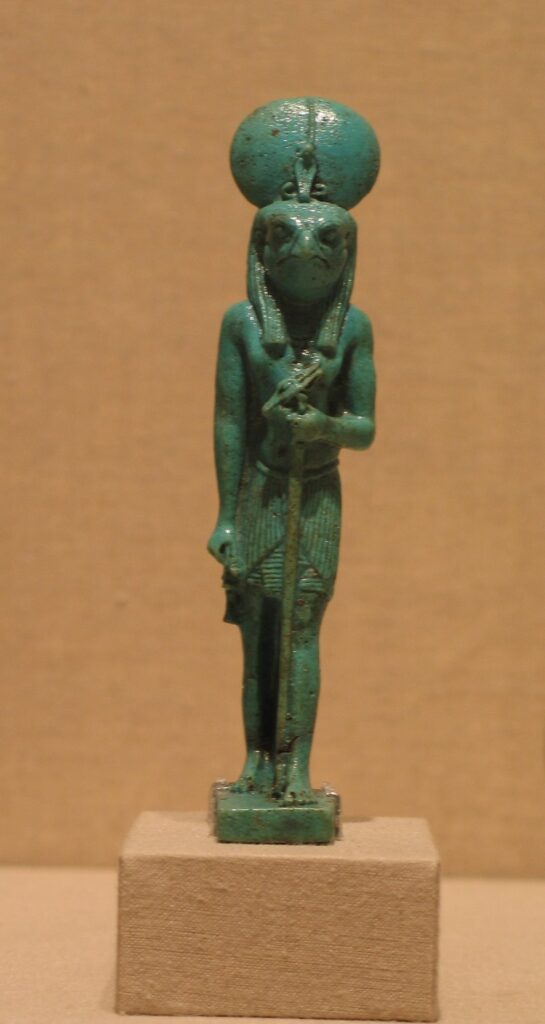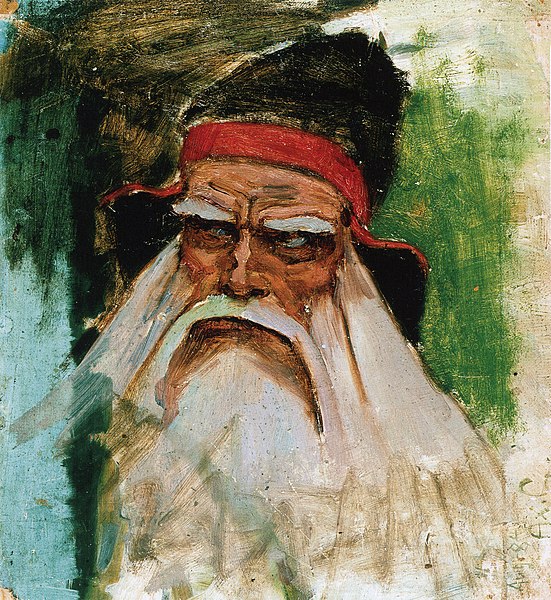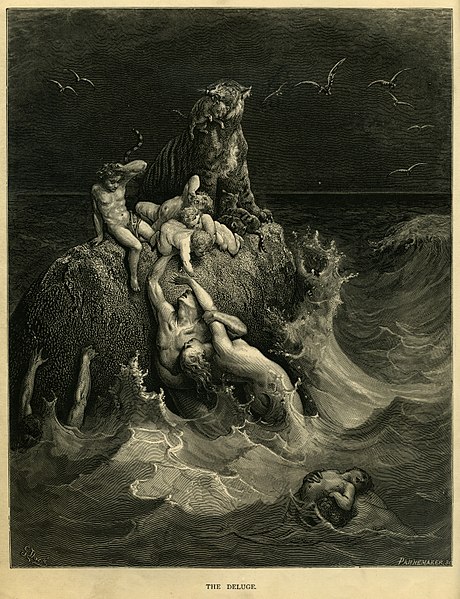Plenty of people have grown up hearing about the flood, an event that wiped out the population of the earth once a very long time ago. Children growing up in Abrahamic religions hear about how Noah (or known as Nuh in Islam) preserved his family and the animals on his Ark for forty days and forty nights and then repopulated the world.
But what about in other cultures? Has the rest of the world preserved any sort of story or history to tell that this flood happened?
The answer is yes! Many cultures all over the world, with the only big exception being Africa, have plenty of flood myths.
What Does Africa Say About The Flood?
Most African cultures do not have a flood myth, especially below Sub-Saharan Africa. As many African countries have converted to either Christianity or Islam, those countries have adopted the flood narratives told by those religions.
However, there is a few exceptions. In the oral traditions of the Kwaya, Mbuti, Maasai, Mandin, and Yoruba cultures, there are preserved flood legends.
Each of these groups of people come from a different part of Africa, for example the Kwaya are Bantu Africans from Tanzania while the Yoruba are West Africans from Nigeria, Benin, and Togo. The diversity of African cultures that preserved these legends shows that the connection with the rest of the world on the subject may still be there but is simply incredibly buried by time.
The other big exception to the lack of a flood myth in Africa is Egypt. The Ancient Egyptians did have their own flood myth.
What Is The Egyptian Flood Story?
The Egyptian flood story is interesting because this is a flood story in which the flood was not water. Instead, it was blood.
The Egyptian God Ra was feeling very disrespected by humanity because they were not giving him as much worship anymore, as people (and even some other gods) were coming to see him as cruel. To get revenge, Ra removed one of his own eyes which turned into his daughter Sekhmet.
Ra was originally only intending for Sekhmet to take out a fraction of humanity, but she got very carried away with all of the punishment and killed so many living creatures that a great flood of blood came over the world. Ra eventually intervened to stop her and managed to do so by getting her incredibly drunk, and the Ancient Egyptians celebrated this by having a wine drinking festival whenever the Nile River had a big flood.

Do The Native Americans Have Flood Myths?
Yes, the Native Americans do have their own flood myths. There are quite a lot of them, but here are a few.
The Choctaw flood story tells that once the world was incredibly dark, and everyone became despaired from the lack of light. They finally saw a light, but it was coming from a giant incoming flood of water. The only people who survived were the ones lucky enough to get themselves and their families onto rafts.
The Eskimo flood story tells that there was a great flood and a great earthquake at the same time. A few people managed to survive this by going to the highest mountains.
The Cree flood story tells of a trickster named Wisagatcak who attempted to use a dam to trap the Great Beaver. As revenge for trying to trap him, the Great Beaver flooded the entire world for two weeks. Wisagatcak manages to restore the land by getting the help of a wolf who ran around the world spreading moss until all of the land returned.
There is also another Cree flood story, from the Kristeneaux which tells that the tribes in the plains were all trying to escape the rising waters of a great flood that wiped out the nations of the world. A virgin named K-wap-tah-w repopulated the earth with her children after being saved from the flooding by a war eagle while the rest of the people were drowning.
Mesoamerican cultures have flood stories, but their originally Pre-Columbian flood stories are believed to have gained influences from Christian traditions taught to them by the colonizers. The Aztecs have a story saying that a human couple survived the flood by hiding in a hollow vessel and cooking fish, but that they were then punished by angry gods because the smoke of their cooking reached the heavens.
The Mayan flood story, which comes from the Popol Vuh, tells that that gods tried three previous times to create the world but ended each of the three previous tries because they did not create proper beings to worship them. Part of the way the third try was ended was through a flood.
In Incan mythology, the flood is called the Unu Pachakuti. According to the Incans, the original race of man were giants but that the creator god, Con Tici, was unhappy with them. To get rid of the giants, Con Tici flooded the earth but saved one man and one woman in a wooden box so that they could start a new race of man.
What Are Some East Asian Flood Stories?
In China, there are three flood myths. One of them is the story of the Great Flood of Gun-Yu which was a flood event lasting two generations that greatly harmed the Chinese population.
During the reign of Emperor Yao, a flood emerged that was so disastrous it spared none of his territory. Yao appointed Gun, the Prince of Chong, to try to control the flood and save China.
However, Gun failed to stop the flooding and was eventually succeeded in the effort by his son Yu the Great. Yu the Great managed to stop the flood, usually said to have received help by the gods for this, and became the sole respected emperor of China. Then Yu the Great would go on to establish the Xia dynasty, which started a tradition of primogeniture dynasties in China.
In Vietnam, there are over three hundred different flood stories that were collected and compiled together by Dang Nghiem Van in the 1990s. According to Dang Nghiem Van, every ethnic group in Vietnam has a flood story and that flood story always ends with two survivors who must repopulate the earth. Sometimes those survivors are siblings, sometimes the male is replaced by a dog, but the surviving two is always a recurring theme.
In the Philippines, there are two prominent flood myths. In one, humanity is wiped out in a flood produced by angry river gods with the exceptions of Wigan and Bugan who repopulated the earth once the waters receded. In the other, the flood was caused by the sons of the Great Spirit in order to create mountains on the originally flat surface of the Earth.
In Japan, there is no major flood myth. This was used by Japanese nationalists to claim that Japan did not flood because it is the center of the world and the closest place on the world to heaven.
What Is The Indian Flood Myth?
The Indian flood myth first appears in the Shatapatha Brahmana and tells of a man named Manu who is warned by Vishnu (in the form of Matsya) to collect the animals and grains onto an ark and save them from an impending flood that will destroy the world. Some scholars argue that this flood story was originally about Yama, but that it was changed to Manu because of social reasons in India at the time.
What Is The Iranian Flood Myth?
The Videvdad tells that Ahura Mazda warns a man named Yima to save the fittest men and women along with two of every animal and plant because a terrible winter is coming that will destroy the world when it melts back into water. While some have argued that this is not explicitly a flood myth, there are others who have argued that the original story was most likely a flood myth that then adapted because the harsh conditions of winter in eastern Iran would have been seen as a bigger threat than a flood.
What Do The Ancient Greeks Say About The Flood?
The most popular flood story from Ancient Greece, although there are multiple, is the story of Deucalion the son of Prometheus. Prometheus instructed Deucalion to build a chest to hide himself and his wife, Pyrrha, in so that they could survive the end of the Bronze Age.
Zeus had become greatly upset with this age of humanity and decided to end them via a flood. Deucalion and Pyrrha sacrificed to Zeus after the flood was over so that he would not kill them as well.
Upon instructions from Zeus, Deucalion and Pyrrha threw stones that then turned into humans. This started the next age in the list of ages in Greek Mythology, the Age of Heroes.
Who Does Norse Mythology Say About The Flood?
Norse mythology actually has a similar story to Egyptian mythology, the flood is caused by blood not by water. In Norse mythology, the flood was created by the overflowing blood of the giant, Ymir, whose death started creation.
This story is told in the Gylfaginning which is the first part of the Prose Edda after the prologue. The survivor of Ymir’s blood flood was a jotunn named Bergelmir, along with his wife. From them came the families of frost giants.
What Is The Finnish Flood Myth?
Like the Norse flood myth and the Egyptian flood myth, the Finnish flood myth also features a flood caused by blood instead of water. This myth is featured in the Kalevala which is an epic poem comprised of Finnish and Karelian oral folklore.
The blood came from a wound on the knee of Väinämöinen. He is a demigod hero and a major figure throughout the Kalevala.

The Genesis Narrative On The Flood
The Genesis Narrative on the flood tells that God saw the world was corrupt and full of violence. God decided to flood the earth and start over because of this.
To continue on humanity, God saved a righteous man named Noah by instructing him to build an ark and save his family along with two of every kind of animal. Then for forty days and forty nights, the earth flooded wiping out everything else that was not on the ark.
Noah’s sons, Shem, Ham, and Japheth, would go on to produce the various peoples of humanity.

The Mesopotamian Flood Myth
The Mesopotamian Flood Myth is retold in the Epic of Gilgamesh. Gilgamesh meets a man named Utnapishtim who is immortal.
Utnapishtim tells Gilgamesh that a long time ago the gods were angry with humanity for being too noisy and decided to wipe them out with a flood. However, one of the gods saved Utnapishtim, because he was a devout follower, by making him immortal.
This version dates back to at least the Old Babylonian period but may have existed as far back as the Sumerians. Gilgamesh was a Sumerian King himself.